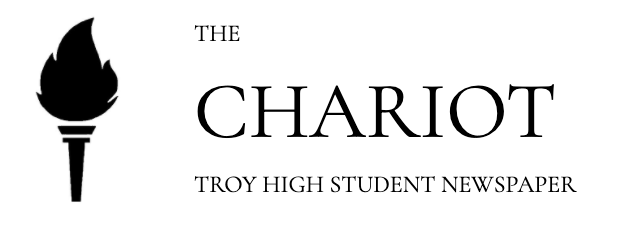The Delectable and Unacceptable
A look into how the differences in perception of Asian American cultures is harmful, and how it can be fixed.
Appreciation of Eastern Asian culture has always been a part of mainstream media. Matcha, bubble tea, k-pop, Disgust for aspects Asian culture has also always been a part of mainstream media. ‘Asians eat dogs.’ ‘Your food smells weird.’ ‘You guys would eat everything.’ Such stereotypes usually stem from ignorance.
A recent example of this occured on James Corden’s segment ‘Spill Your Guts’ on his show ‘The Late Late Show with James Corden’, which has been getting a lot of negative attention. The segment consists of Corden and his guest getting each other to spill a dirty secret. If one refuses to ‘spill’, they have to eat one of the ‘gross’ foods on the table. One of the foods is balut, which is a fertilized developing egg embryo and also a traditional Asian street food seen in many parts of Asia including Cambodia and Vietnam. Corden’s segment is yet another example of the blatant degrading of traditional Asian foods, whilst ‘aesthetic’ and ‘pretty’ Asian foods are accepted with open arms.
For example, kimchi is a popular side dish from Korea. Koreans have been eating kimchi for thousands of years. Many white people eat kimchi as a healthy food trend while disregarding the Korean history and culture behind it. They also forget about their racism towards Koreans for how ‘smelly’ and ‘gross’ kimchi was, long before it was trendy.
For thousands of years, the West has viewed Asian countries as exotic, simplifying the complex traditions and histories of various Asian cultures into marketable goods. Especially in recent years, as more contemporary parts of Asian culture enter Western media, people have continued to cherry-pick the aesthetics or entertaining aspects of Asian culture while not caring about the people behind it. The average American is generally exposed to aspects of Asian culture that is considered to be ‘palatable’ to their standards. European cultures are typically not met with the same level of scrutiny considering that a lot of the basis of the West’s standards are eurocentric. The continually accepted belief is that Asian people are not as important as white people, and therefore leads to the appropriation of Asian culture.
Social media has become a hotspot for trending ‘aesthetic’ Asian foods and cultural goods. Social media influencers have capitalized off of Asian culture such as bubble tea, anime, and mahjong. Making bubble tea to be more suitable to white peoples’ taste, creating TikTok audios using anime without crediting, and selling an ‘aesthetic’ version of mahjong for over $300 targeted to the white audience, like three white women did when they created a company to “respectfully refresh” the traditional game of mahjong.
At the same time, a rise in Asian hate crimes has spread across the U.S in the past year, which seemed like a test to see if the social media influencers would speak up for the people behind their ‘aesthetic’ and ‘pretty’ content. A lot of these influencers failed this test. People continued to use aspects of Asian culture for content and for their own enjoyment while turning their backs to the Stop Asian Hate movement and the discrimination that Asian Americans and Pacific Islanders face.
People who refuse to speak up for the AAPI community unknowingly support the myth that AAPI don’t face discrimination and hardships, creating another falsehood that Asians are superior to other minorities and that Asian culture is more palatable. This also strengthens the idea that the West are above the East and that they can take the parts of Eastern culture that they want for their own benefit. This is often done without educating oneself on the aspect of the culture they wish to appropriate.
For example, the Áo dài is a traditional Vietnamese garment worn most commonly by women. This dress, sexualized by the West, can be seen worn by many celebrities, such as Kacey Musgraves, without its cultural context. The Áo dài is a symbol of beauty and elegance and the West has completely ignored this fact. As an Asian American woman myself, I find this extremely uncomfortable. This serves as proof that they will often be over-sexualized and fetishized. This example is just one of many that serve as constant reminders that our cultures are not ours to control.
However, this issue is not a lost cause. There are many ways that we can take steps in the right direction. We can start with making sure that white people add complexity back to the various aspects of Asian cultures. This means adding context and history back into both the aspects of Asian culture labeled as “aesthetic” and as “gross.” Another solution is spreading awareness about the habit of minimizing the significance of Asian foods and aspects of Asian culture. If more people were knowledgeable about the complexity of different Asian cultures, then there would be a better understanding of it. . Supporting aspects of Asian culture would also mean supporting Asians beyond a product, but as people, especially against discrimination.
Finally, understanding that you are not an ‘ambassador’ or ‘representative’ of a certain aspect of Asian culture is crucial. Asian cultures are rich with history and complexity (and not all are the same); you should understand that you might always not know the thousands of years of history behind a food, spiritual practice, or drink. Always be open to learning more about the different cultures in Asia and acknowledge that you don’t know everything about a certain part of it. It’s better to act with an open-mind rather than ignorance and brutality.
It always fascinates me and makes me proud how widespread different Asian cultures have become. However, my fellow Asian Americans and I cannot simply overlook the constant fetishization, love, and praise for one Asian food and the disgust for another. The same goes for our clothing and the other details that make us who we are. Being open to trying new things and educating yourself on our culture is essential. I hope that the wonders of Asian culture spread further into Western society. But with that, we must also invest in the protection of Asian lives and our traditions.
Your donation will support the student journalists of Troy High School - MI. Your contribution will allow us to print our work, purchase equipment and cover our annual website hosting costs.


